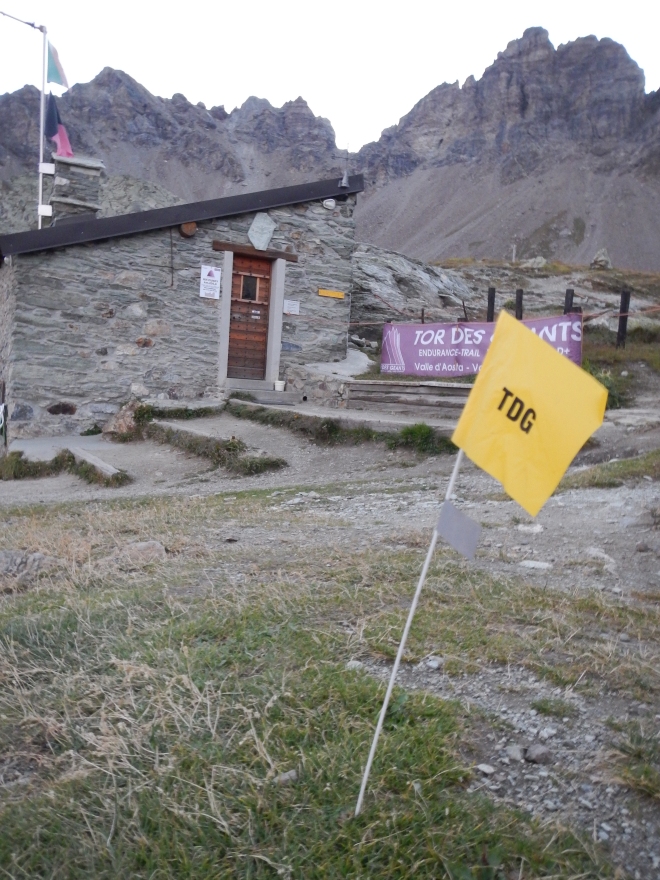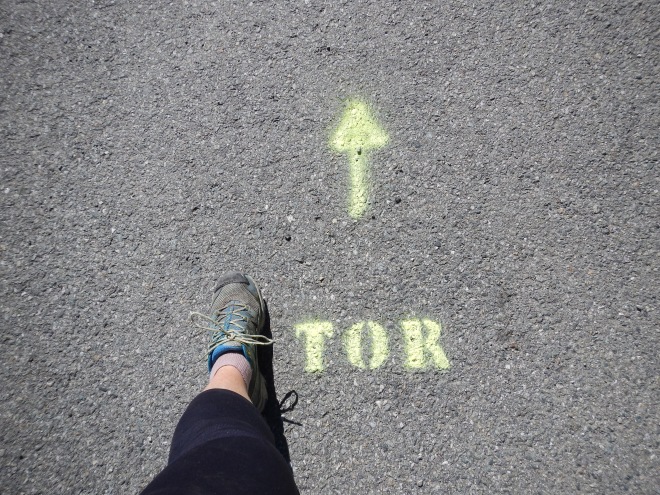More Post-TDG Thoughts and Lists
A year after the fact, I am finally posting all the information that I wish I had before I toed the starting line of the Tor Des Géants in 2014. Although I hope that this is useful to someone heading out for the same event, it truly is for my own memory bank and could be helpful when I begin packing for the next adventure. This, partnered with my 7 blog-post account of our journey, keep those memories of the race crystal clear (except, of course, for all the sleep deprivation hallucinations – but that is another story)!
Stuff I Found Helpful / Stuff I Wish I Had Known:
-shirt/garment sizing is all in men’s sizes but I ordered medium since I thought I was ordering a women’s medium. Being a small woman, I wish I had ordered a men’s extra small. When I wear my finisher jacket, it looks like I borrowed my boyfriend’s rather than earned it myself. Luckily, I was able to trade my participant technical top for an extra small which fits perfectly.

-pre-race gear check was an absolute gong show with only four volunteers checking every racer’s pack. We spent about 3 hours waiting in line where we met some amazing people.

-make sure that you have everything on the mandatory gear list and anticipate random controller checks throughout the event. Our friend, Pieter, was randomly checked at approximately 200 km and was lectured for having a wool top, rather than a microfleece top, but luckily was not given a time penalty for this infraction (although I believe that wool is a superior fabric to microfleece and I, myself, was also carrying only wool, which had been approved at the gear check)

-the mountains have a predictable tree line at 2200 m. Above this point, trails are usually open and rocky. If bad weather rolls in, you will be very exposed above this line. Rifugios are often just above the treeline in a basin below the pass.
-refreshment aid stations are far more frequent than what is shown on the main map. I carried two 600ml bottles as well as a 1.5L water bladder in my pack. I removed the bladder in Donnas since water availability was never an issue. But do not drink from streams! There are far too many cows, goats and other livestock around.
-watch the clock in life bases. We spent 7 hours in both Donnas and Gressoney even though we only spent 3 hours sleeping in each. It is very easy to lose track of time in life bases.
-Donnas is a very difficult life base to leave and many racers drop out there. It is the lowest elevation of the route (330m) and the following 17km climb to Rifugio Coda is a tough 1900m ascent (6200ft). Expect to feel terrible in Donnas and anticipate the desire to drop. Develop a plan to get yourself refreshed and out the door. For me, after an emotional meltdown and a few pointed words from my husband, I ate a large, hot meal, drank a lot of both water and wine and slept for three hours. When we woke, I simply went through the routine of getting ready to go with no opportunity to further reflect on abandoning.
-look for and ask the volunteers if there are any unique foods at their aid station. Many volunteers bring their own delicacies and are delighted to share them with you but they may not be out on display or you may overlook them in your rush to move on. We enjoyed chocolate mousse, hunks of parmesan cheese, baked polenta, barbecued pork and a pastry twist called Torteccini di St Vincent. Each of these was a delicious treat after eating the same aid station food over and over (and over)
-write a list of things to do while in a life base. My list included lists of food, pills and drink mixes that I needed to top up each time as well as options for shoes, clothes, etc. When I got severely fatigued, it really helped me to stay focussed and follow my plan. Because of my lists, I never left a life base forgetting something.

-anticipate the desire to drop and write yourself motivating thoughts to avoid a DNF. My list included the names of friends and family who had supported me and who had to sacrifice something in order for me to be there. I carried this reminder note with me the entire race but referred to it only once.
-bring earplugs with you all the time. Rifugios are noisy and sleep minutes are precious. I also carried those eye shades that airlines hand out since some sleep was in mid-day.
Route Markings
Following the historical Alta Via 1 and 2, there was never any question about where to go. The whole route is well-marked with yellow triangles or yellow dots painted on rocks. When the route went through open pastures, it was marked with TDG surveyor flags, although some had been eaten by herds of cows. Within the towns, you need to pay closer attention as the route goes through back alleys and tiny streets but these are also marked with the yellow triangle or the ‘Tor’ markings.





Mandatory Gear and Life Base Bag


I never needed the warm coat, the yaktrax, the instant mashed potatoes and most of the drink mix powder (blech!) I did shower once at the Gressoney life base but I did not change my running clothes at all for the six days. I washed my feet and changed my socks at every life base and switched shoes at halfway. It was good to have a warm sweater to put on while at the life base since they were often big, open gymnasiums. Next time (!), I would add sandals/flip-flops to this bag for Life Base wandering.


Photos – We each had a camera and we took many photos. Although they are not yet captioned, you can see our entire gallery here: https://www.flickr.com/photos/lonerunman/sets/72157647815485339/
For the full story of our TDG trek, click HERE! If you have any questions about my experiences during the TDG event, please comment below. I would be happy to help in anyway possible.
